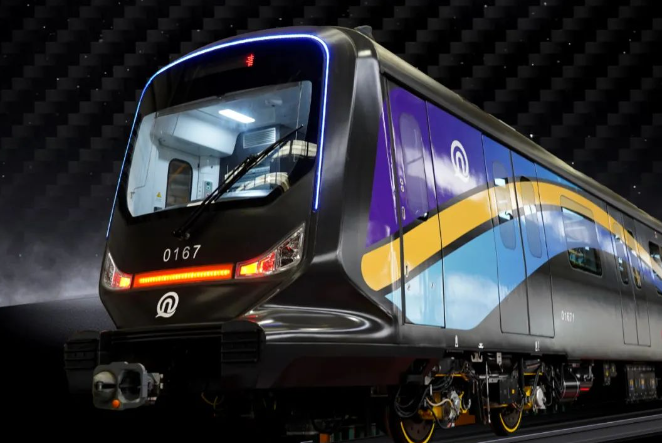At the Material Science Conference of the world’s top scientists held on October 26, Shi Lei, general manager of CRRC Molding Technology Co. LTD, said that the history of rail transit development is the history of the evolution of materials, and the main material of China’s high-speed rail from carbon steel to stainless steel, and then to the main material of the Fuxing high-speed train body aluminum alloy has experienced multiple generations.
In the future, in the face of high-speed trains with higher speed levels, a new material is bound to be needed to upgrade the main material of rail transit equipment, and carbon fiber composite materials have become an excellent solution for upgrading rail transit equipment with excellent performance.

Carbon fiber, known as industrial black gold, is an inorganic fiber with a carbon content of more than 95%, which has the advantages of high temperature resistance, corrosion resistance and strong designability, and its strength is 5 times that of aluminum alloy and its density is only 2/3 of that of aluminum alloy. Previously, carbon fiber was mainly used in a few fields such as aviation, aerospace, and sporting goods. In recent years, with the increasingly mature design and preparation technology, carbon fiber composite materials have gradually become a hot spot in the field of lightweight new energy vehicles and rail transit.
Global rail transit manufacturers have launched research on carbon fiber composite materials, foreign carbon fiber applications started early, strong technology, but for now, the world still has not realized the mass application of carbon fiber in rail transit vehicles, and the lack of relevant technical standards.
In June this year, the world’s first carbon fiber subway train for commercial operation, “CETROVO 1.0 Carbon Star Fast Rail,” was officially launched in Qingdao. Developed by CRRC Qingdao Sifang Rolling Stock Co., Ltd. for Qingdao Metro Line 1, the train is 11% lighter, 7% less energy consumption and 22% less life-cycle maintenance cost than traditional subway vehicles.

Shi Lei said that although the application of carbon fiber in the field of rail transit has achieved stage achievements, large-scale application still faces a series of key problems to be solved. “In general, I can’t afford to use it, use it badly, and dare not use it. The whole process manufacturing cost of carbon fiber composite material is high, there are problems in the application of carbon fiber single material and the inherent thinking of metal material design, and the lack of overall evaluation means and standards for the whole life cycle of carbon fiber composite material.
After in-depth research, we have initially broken through these three bottlenecks on the secondary bearing structural components, and the related products have the conditions for mass application. In order to further reduce costs and improve production efficiency, it is also necessary to develop special high-performance, low-cost flame-retardant – toughening – fast-curing resins for the operating conditions of rail transit equipment and the load and service characteristics of each typical component, and tackle the low-cost application technology of large tow carbon fiber to further promote the large-scale application of carbon fiber composite materials in the field of rail transit.”
Thermosetting resin-based carbon fiber composites are also facing the challenge of difficult recycling in the process of use. Shi Lei said that at present, the recycling methods of carbon fiber composite materials are mainly physical recovery, pyrolysis recovery and chemical recovery, which have the problems of high cost and low efficiency. In the future, the research of thermoplastic resin based carbon fiber composites will be increased to give full play to its weldable and recyclable performance advantages, and strive to achieve carbon neutrality of rail transit carbon fiber composites.




